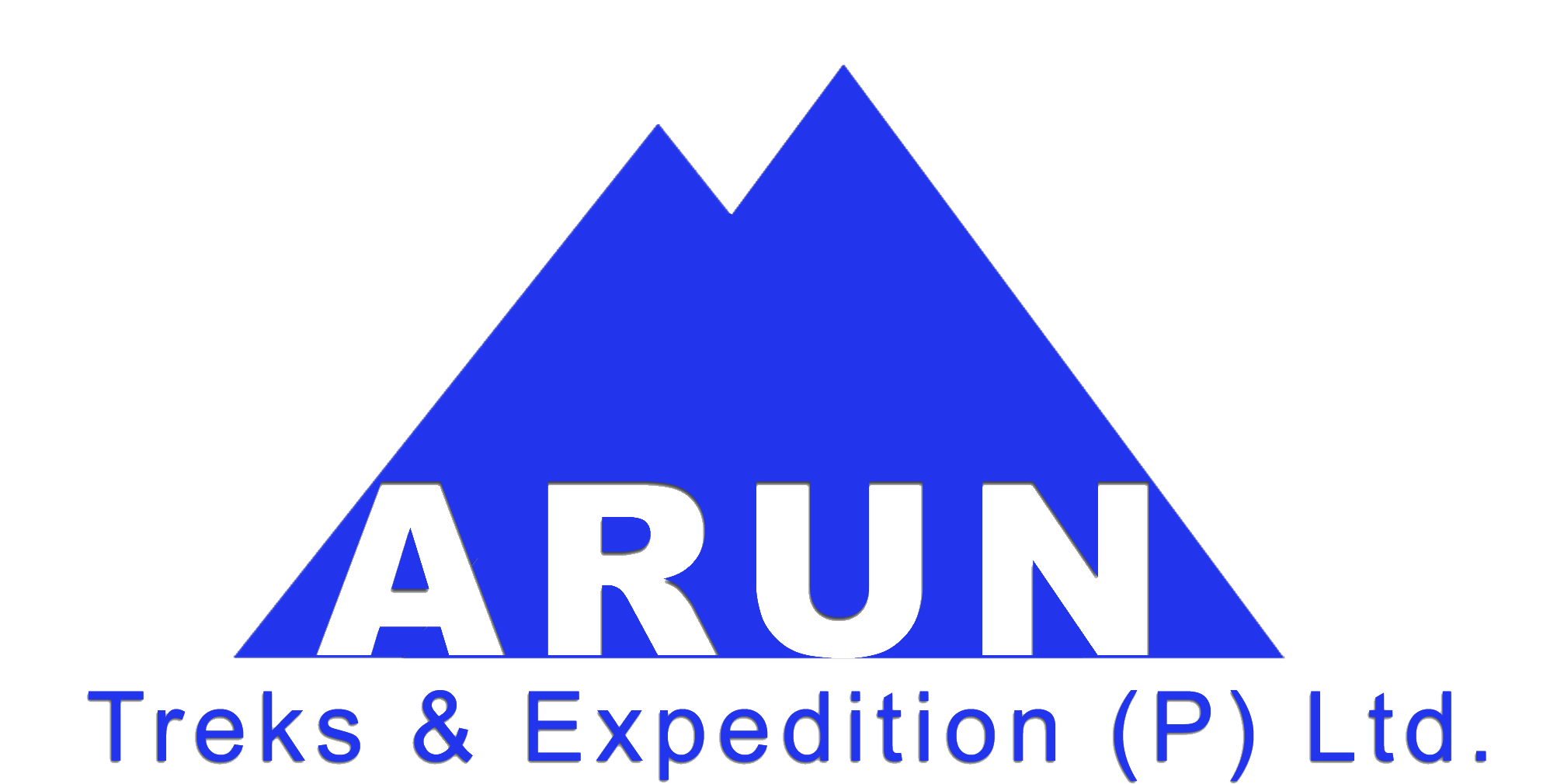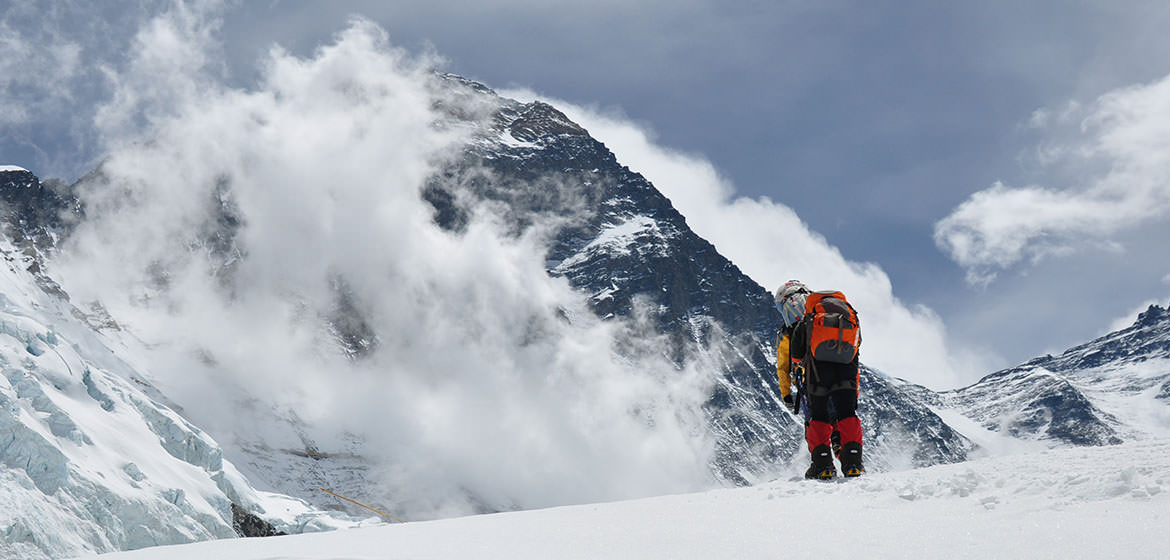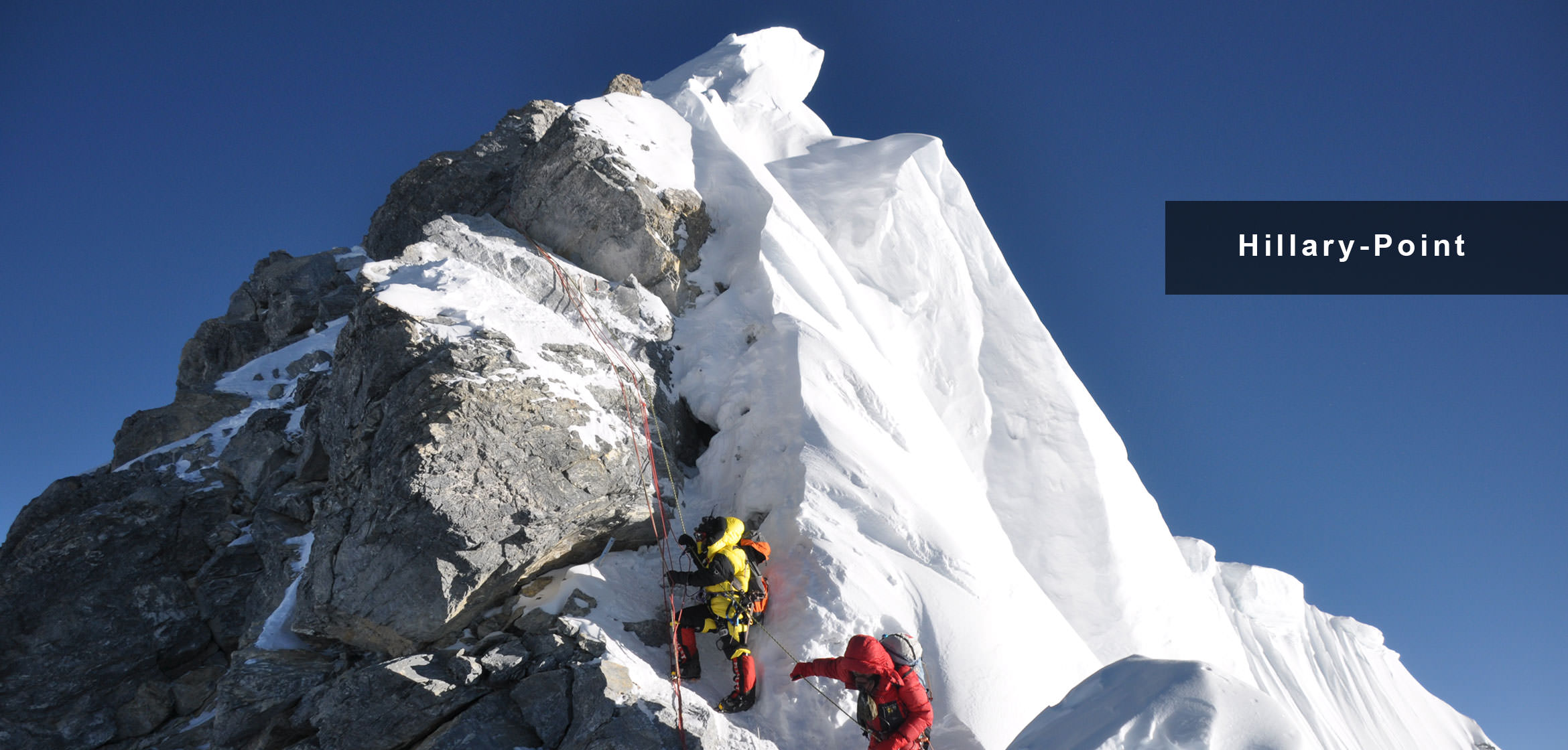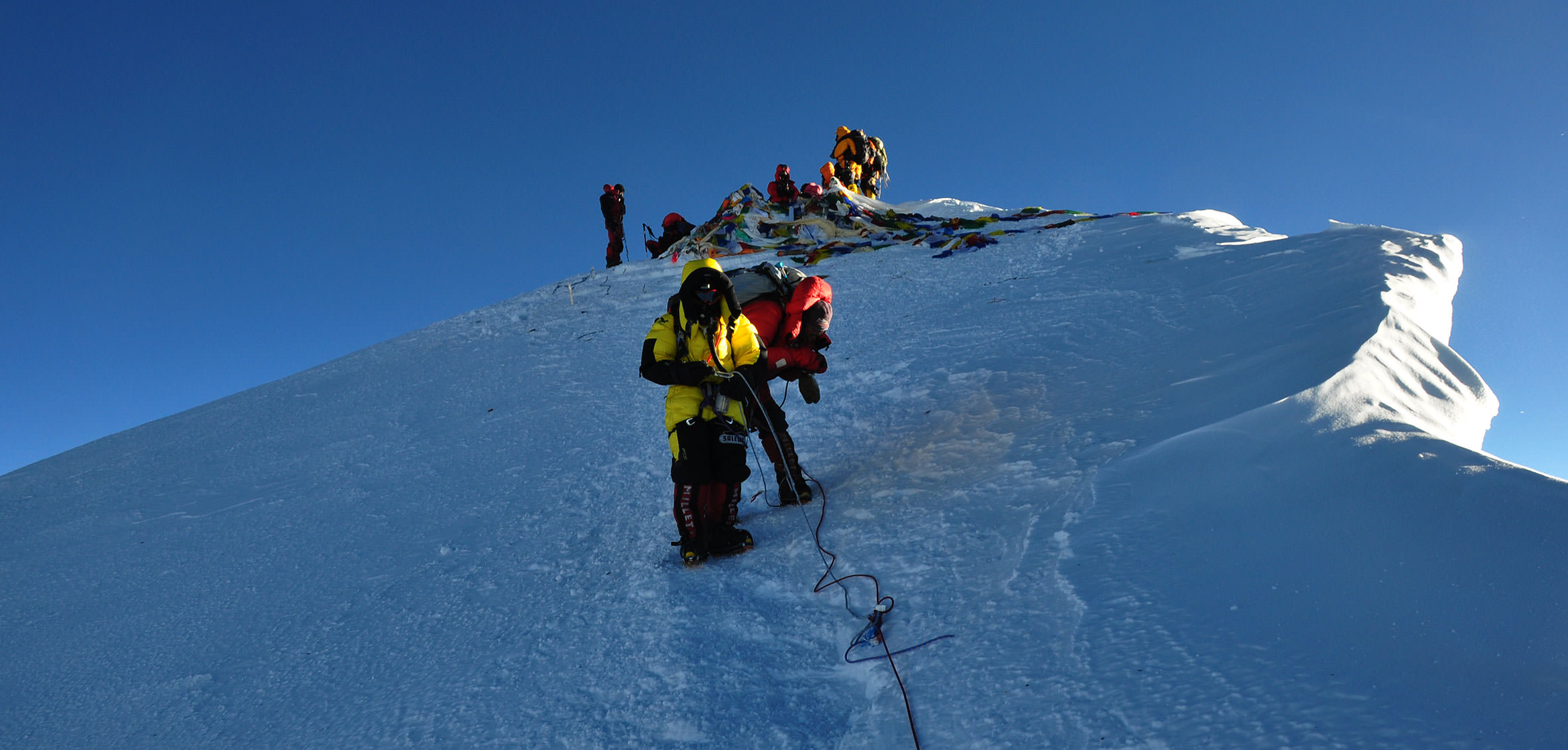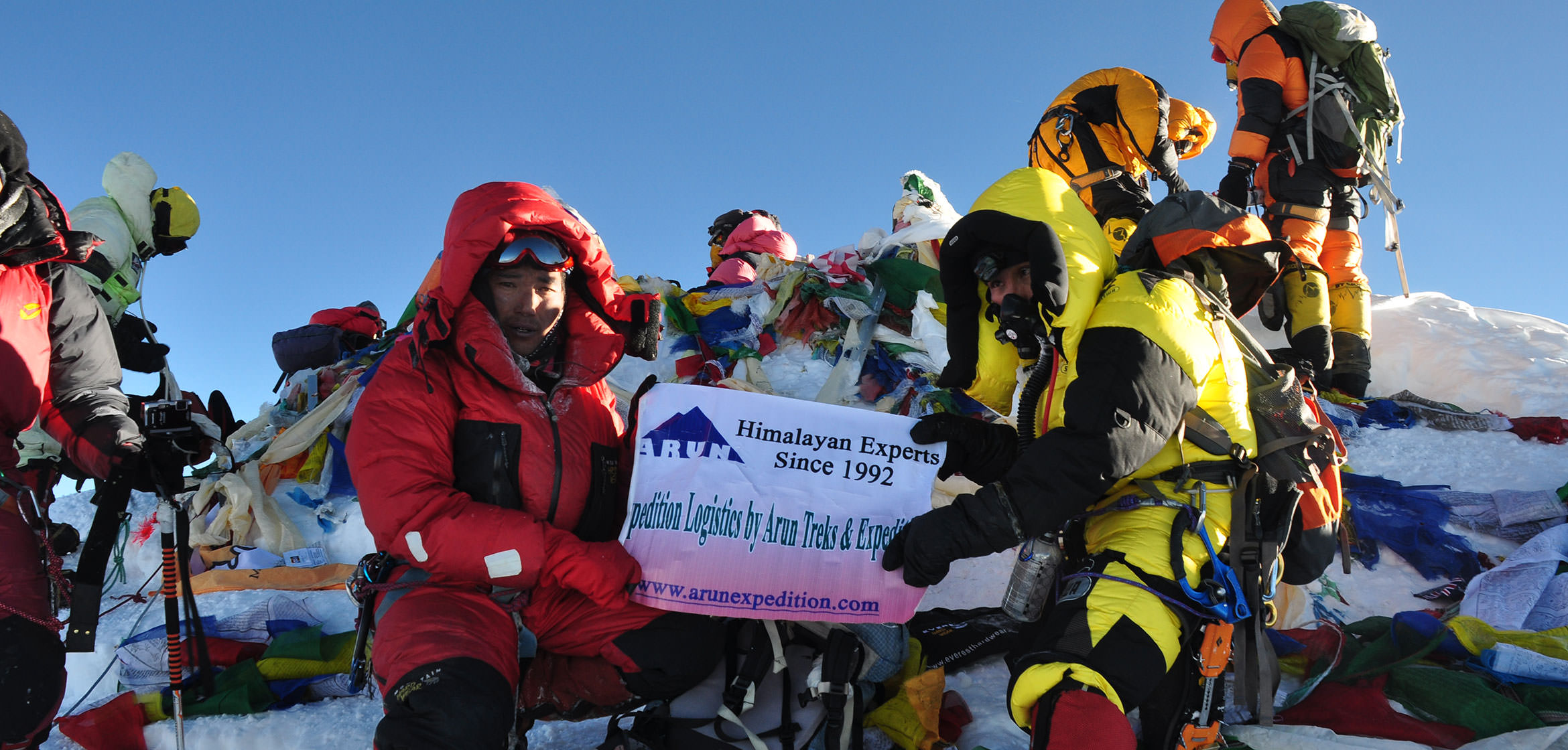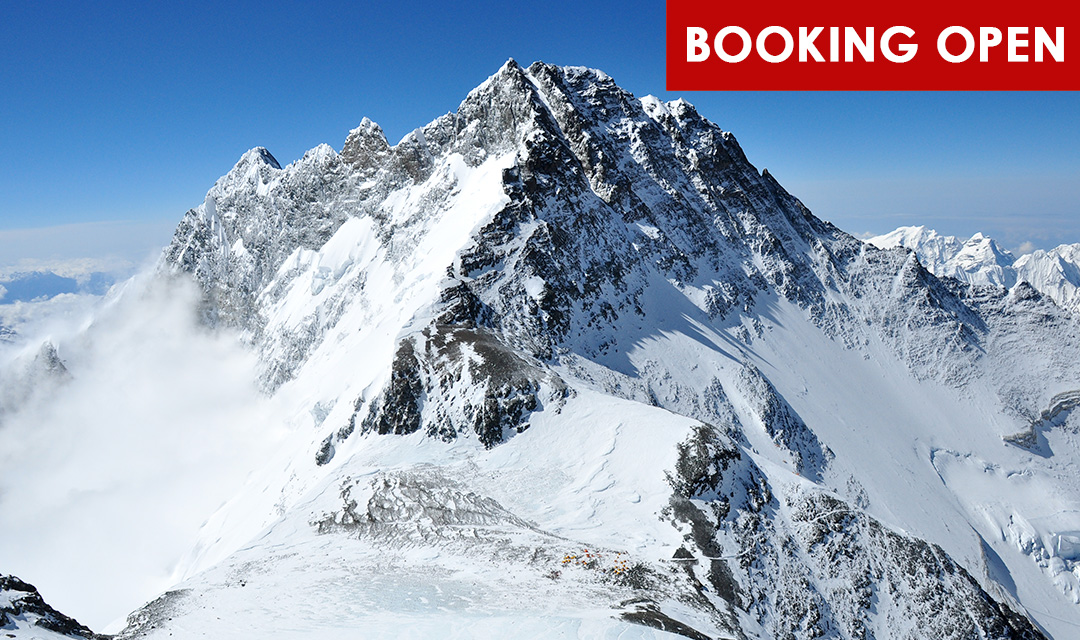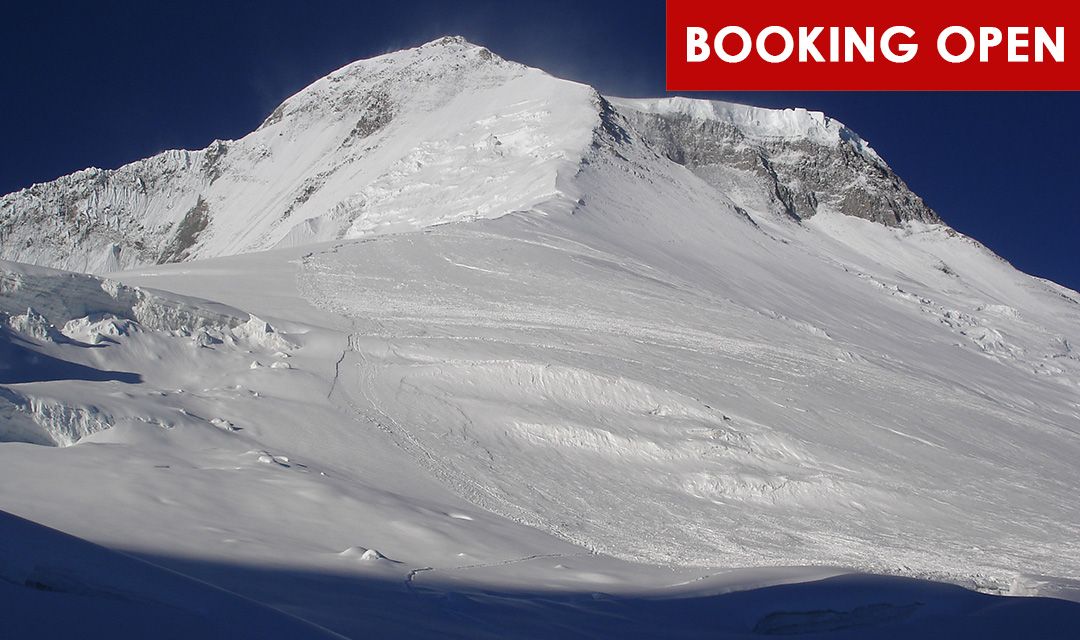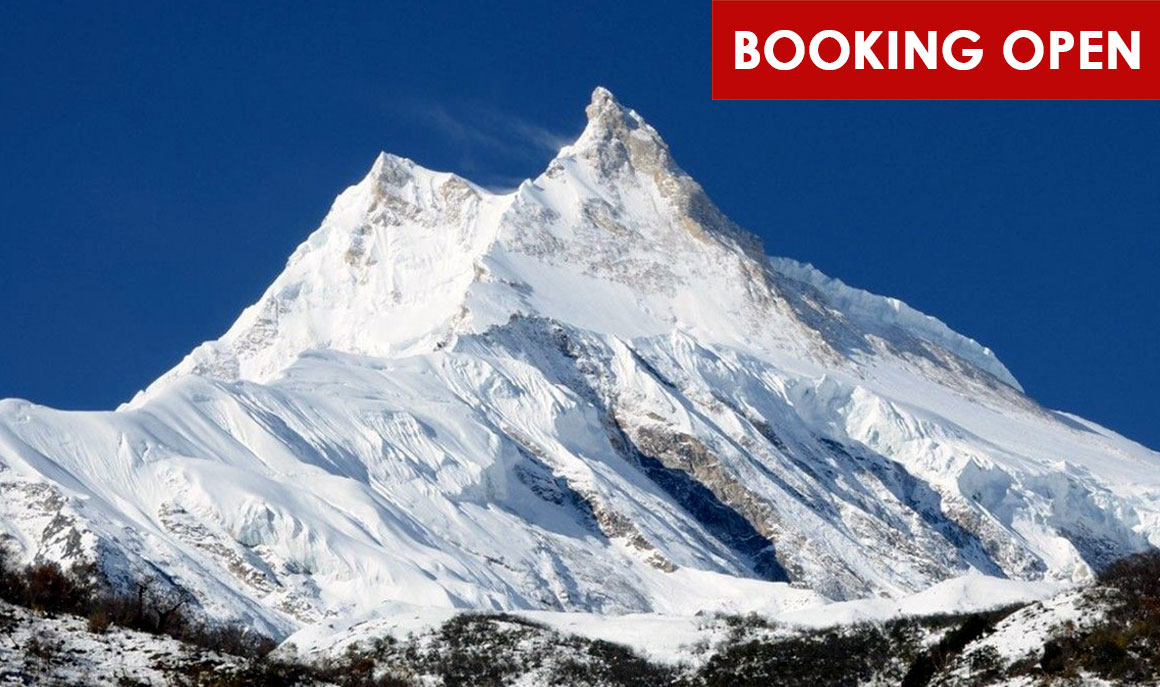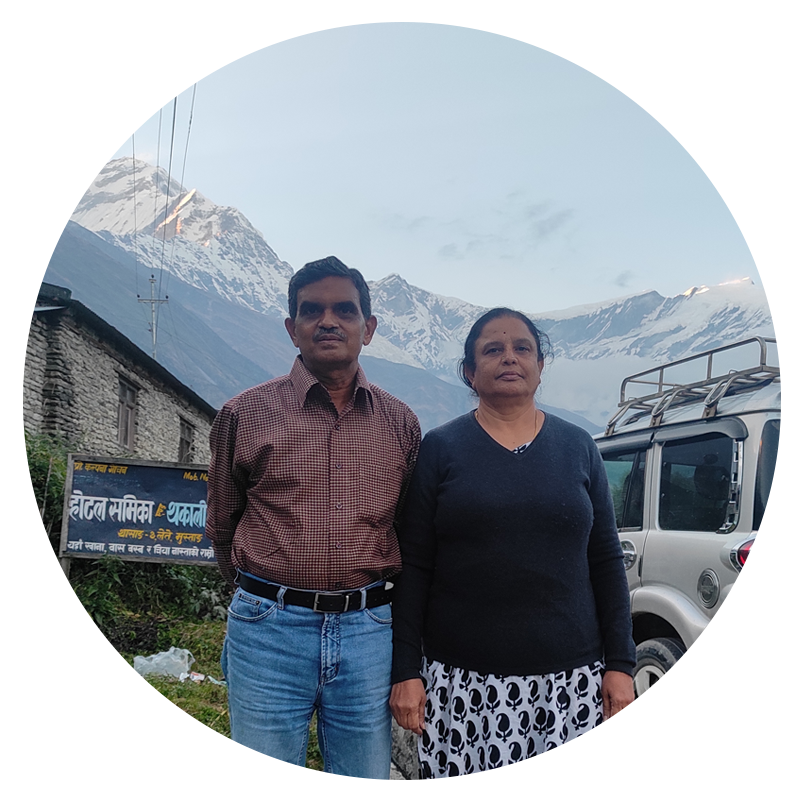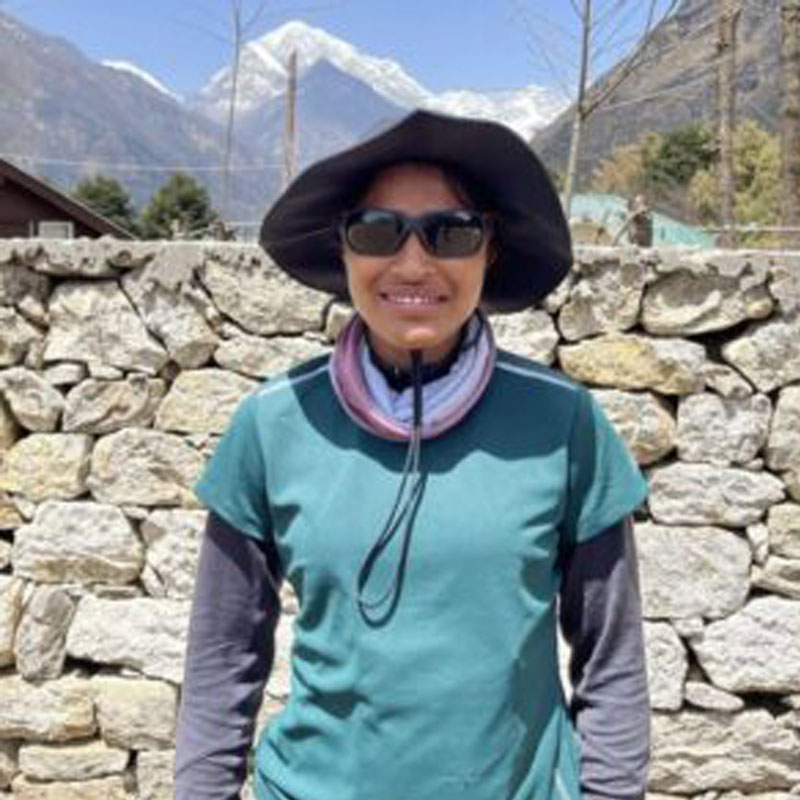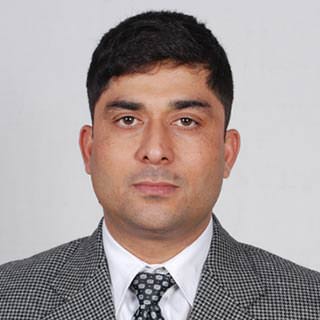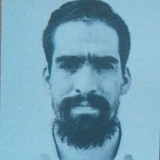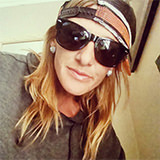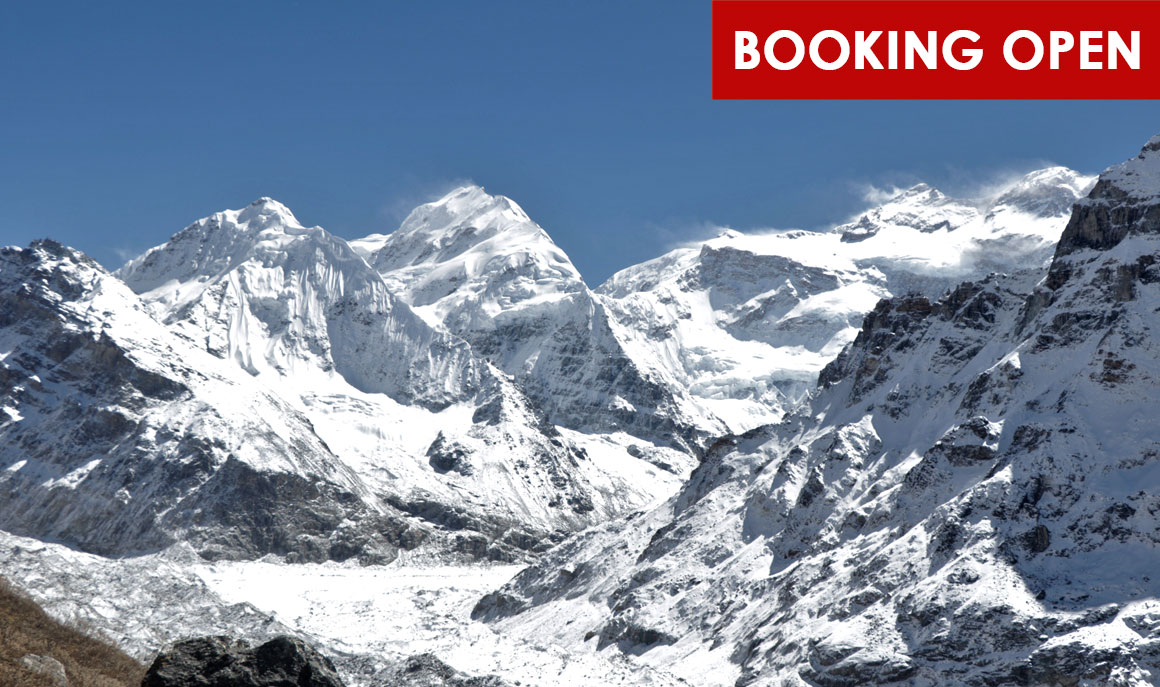
Mount Everest, rising 8,848.86m (29,028ft) above sea level reigns as the highest mountain on Earth. For decades summiting Everest has been considered one of the greatest mountaineering achievements. In the spring of each year, we embrace this intense challenge by taking a group of qualified climbers to Nepal to climb Mt. Everest via the South Col route. The South Col was the first successfully climbed route on Mt. Everest as Sir Edmund Hillary and Tenzing Norgay accomplished this feat in 1953. Since then, the South Col has seen over 1000 ascents. It is by far, the most successfully climbed route on the mountain.
EXPEDITION HIGHLIGHTS
-
Climb with one among the top 5 Mountaineering expedition organizing company in the Himalayas (30% of the total Everest expedition in the year 2010 was logistically organized by Arun Treks, and 85% success oriented that year with no any tragic incidents)
-
Climb the world's highest peak, Mt. Everest
-
Climb Mt. Everest from the South side Normal route
-
Climb Mt Everest with experienced Sherpa Guides and climbing sherpas, who have climbed Everest more than 10 times.
-
Experience the unique culture of the Sherpa people.
-
Expert & experienced Cooking Crews during the expedition
-
Nice, Friendly & Comfortable logistic arrangements
-
Best quality logistics through out the expedition.
 |
Arrival in Kathmandu & transfer to hotel |
.jpg)
 |
Half day sightseeing and evening equipment preparations |
.jpg)
 |
Kathmandu; final preparation for trek |
 |
Fly Lukla, trek to Phakding |

 |
Trek to Namche Bazaar |

 |
Namche. Rest day/side trip to Syangboche/Thame |

 |
Trek to Tengboche |

 |
Trek to Dingboche |
 |
Dingboche. Rest day |
.png) |
Trek to Lobuche |

.png) |
Trek to Gorekshep |
.png) |
Trek Everest Base Camp |

.png) to
to  Mt. Everest Climbing Period
Mt. Everest Climbing Period
 |
 |
 |
.jpg) |
|
 |
 |
.png) |
Trek to Pheriche |
.png) |
Trek to Namche |
.png) |
Trek to Lukla |
.png) |
Fly back to Kathmandu |
.png) |
Free day in Kathmandu. |
.png) |
Fly back to home |
By the time we reach at base camp, our climbing leaders and Sherpa will be well on the way to having the lower part of the mountain (the Khumbu Ice Fall) already fixed with ropes and ladders. We will establish four camps on the mountain. The first, at 19,500ft, is situated at the top of the ice fall. This camp functions as an intermediate camp until Camp II (advanced base camp) is established at 21,000ft. Camp II will consist of large tents for cooking and dining and several smaller tents for sleeping. Camp II will be our base during the placements of Camp III and Camp IV (23,500ft and 25,912ft respectively). Camp III, which stands at the head of the cirque on the Lhotse face, will consist of three and four man tents. This camp serves as an intermediate camp which climbers will use to reach Camp IV (high camp) on the South Col. Most of our Sherpa are able to carry directly from Camp II to Camp IV, so large amounts of gear are not needed at Camp III to establish Camp IV. Oxygen will be used above Camp III to help aid climbers in reaching high camp before attempting the summit. From Camp IV, we travel along the South East Ridge to the South Summit. From here we traverse for a few hundred meters before reaching the Hillary step and then onto the main summit.
After the Icefall, the climbers arrive at Camp I, which is located at 19,500 feet. Depending on the type of expedition, Camp I will either be stocked by the climbers as they ascend and descend the Icefall or by Sherpas in advance. The area between Camp I and Camp II is known as the Western Cwm. As the climbers reach Camp II at 21,000 feet, they may be temporarily out of sight of their support at Base camp. Nonetheless, modern communication devises permit the parties to stay in contact.
As the climbers leave Camp II, they travel towards the Lhotse face (Lhotse is a 27,920 foot mountain bordering Everest). The Lhotse face is a steep, shiny icy wall. Though not technically extremely difficult, one misstep or slip could mean a climber's life. Indeed, many climbers have lost their lives through such mishaps.
To reach Camp III, climbers must negotiate the Lhotse Face. Climbing a sheer wall of ice demands skill, strength and stamina. It is so steep and treacherous that many Sherpas move directly from Camp II to Camp IV on the South Col, refusing to stay on the Lhotse Face.
As you're leaving C4…it's a little bit of a down slope, with the uphill side to the left. There are typically snow on the ledges to walk down on, interspersed with rock, along with some fixed rope. The problem with the rope is that the anchors are bad, and there's not much holding the rope and a fall could be serious. Fortunately it's not too steep, but there is a ton of exposure and people are usually tired when walking down from camp. The rock is a little down sloping to the right as well, and with crampons on, it can be bit tricky with any kind of wind. There's a little short slope on reliable snow which leads to the top of the Geneva Spur, and the wind pressure gradient across the spur can increase there as you're getting set up for the rappel. Wearing an oxygen mask here can create some footing issues during the rappel, because it's impossible to see over the mask and down to the feet. For that reason, some people choose to leave Camp 4 without gas, as it's easier to keep moving down the Spur when it's important to see all the small rock steps and where the old feet are going. Navigating down through all of the spaghetti of fixed ropes is a bit of a challenge, especially with mush for brains at that point. One lands on some lower ledges which aren't so steep, where fixed ropes through here are solid. At this point, it's just a matter of staying upright, and usually, the wind has died significantly after dropping off the Spur. The route turns hard to the left onto the snowfield that leads to the top of the Yellow Bands.
After Camps III and IV are established and all our supplies are in place, we return to Base Camp for a rest. At Base Camp we will organize our summit teams and prepare ourselves for summit attempts. Once we are ready, we return to Advanced Base. If good weather prevails we move the summit team to Camp III, on day 2/3. Day 3/4 will be summit day for the team. They will start very early that morning and attempt to reach the summit before mid-day. After the summit, they retreat back to the Camp IV and on to Camp III. Next day the team will back to camp II & base camp.
Once the climbers ascend the Hillary Step, they slowly and laboriously proceed to the summit at 29,028 feet. The summit sits at the top of the world. Though not the closest place to the sun due to the earth's curve, it is the highest peak on earth. Due to the decreased air pressure, the summit contains less than one third of the oxygen as at sea level. If dropped off on the summit directly from sea level (impossible in reality), a person would die within minutes. Typically, climbers achieving the great summit will take pictures, gain their composure, briefly enjoy the view, and then return to Camp IV as quickly as possible. The risk of staying at the summit and the exhaustion from achieving the summit is too great to permit climbers to fully enjoy the great accomplishment at that moment.
• Climb the world's highest peak, Mt. Everest
• Climb Mt. Everest from the South side Normal route
• Climb Mt Everest with experienced Sherpa Guides and climbing sherpas, who have climbed Everest more than 10 times.
• Experience the unique culture of the Sherpa people.
• Expert & experienced Cooking Crews during the expedition
• Nice, Friendly & Comfortable logistic arrangements
• Best quality logistics through out the expedition.
- Click for Exchange Rate Today.
• 6(six) nights 3 STAR hotel accommodation in Kathmandu on single room BB basis
• Flight to and from Lukla.
• Custom clearances as required
• Excess baggage to & from Lukla with domestic airport taxes
• Necessary number of porters/yak to carry load to & from base camp
• Liaison officer wages and allowances
• Everest Ice fall charges
• One head Expedition Climbing Sirdar
• Experienced cooks and Kitchen boys.
• Permanent camp II (Advance base camp) kitchen set up with necessary arrangements.
• Experienced & profession high altitude (1:1) personal climbing Sherpa to each client
• Climbing Sherpa's wages, equipment bonus, insurance, high camps load ferry bonus etc.
• Best quality tents at Base camp with sleeping mattress
• Best quality dinning tent with heater at BC
• All necessary kitchen & camping equipments during the treks & climb
• Portable comfortable wooden toilet at base camp
• Shower facility at base camp
• Carpeting inside the dinning tent
• Imported high quality high Altitude tents for the higher camps
• All necessary climbing hardware gears except personal gears
• Highly preferable meals at Base camp & above for higher camps
• All the hot drinks with beverages during the expedition
• Imported quality high altitude freeze dried food & individual packet food
• Enough numbers of EPI gases with burner for high camps
• POISK Oxygen (05 Bottles per client & 03 bottles per Sherpa)
• Mask and regulator to use
• Walkie-talkie set to each client with radio base station & accessories
• Satellite phone for the emergency purpose (Personal call $ 4 per minutes)
• Solar panel/Generator with accessories at base camp for recharging & power supply
• Gamow/PAC bag at base camp for medical purpose
• 2 pieces of ARUN duffel bags to each clients
• BC purpose ARUN sleeping bag & Down jacket to each client
• Oxygen with mask set for medical purpose at base camp
• Daily wages, equipment bonus of staff + LO
• Insurance of local team members + LO
• All airport/hotel transport
• Celebration meal in Kathmandu
• Half day sightseeing in Kathmandu
• International Air ticket & air port taxes
• Nepal visa/re-entry visa fees
• Major meals in Kathmandu
• Support Personal Climbing Sherpas
• Personal climbing gears.
• Personal natures expenses
• Cost of emergency evacuation
• Summit bonus & Tips
| Trip Code | - | ATE-EverestS |
| Altitude | - | 8848.86m/ 29028ft |
| Grade | - |  |
| Activities | - | 8000M Expeditions (Nepal) |
| Trip Duration | - | 50 |
| Trip Best Season | - | Spring season |
| Group Size | - |
 Flexible for private group Flexible for private group |
| Start/End at | - | Kathmandu/ Kathmandu |
| Destination | - | Nepal |
| Departure Date | - | N/A |
| Cost | - | US$ 32,500 |
| Hotel Info | - | N/A |
PERSONAL CLOTHING
- Travel/town clothes (can leave extras in hotel in KTM)
- Sun hat suitable for snow conditions
- Sunglasses: Category 3 or4, glacier type, UV & polarized are best
- Snow goggles (as for skiing)
- Warm (fleece/wool) hat or beanie
- Fleece scarf or neck gaiter AND balaclava
- 1-2 pairs of thermal liner gloves
- Windstopper fleece gloves
- Heavy mitts with waterproof shell (note: mitts not gloves)
- T-shirt/long-sleeved shirt
- 2 Thermal tops
- Fleece jacket or pullover mid weight
- Fleece jacket heavy weight
- INCL Mid-heavy weight down jacket
- Rain and wind-proof jacket, preferably Gore-Tex
- Rain and wind-proof pants (best with full side zips)
- Trekking shorts&/or long pants lightweight
- 1-2 Thermal long pants
- Fleece long pants, mid weight
- Several pair's socks and underwear
- Trekking boots – we suggest strong leather boots
- Warm boots for camp (e.g. sheep skin boots) *Optional but great!
- Sleeping Bag (-30) 1
- Sleeping bag (-40) 1
- Sleeping Bag liner 1
- Summit liner Shoes 2 pairs
- Summit Gloves 1 pair
- Camp 3 gloves 1 pair
- Trekking sunglass 1
- Summit hot woolen 1 pair
- Liner Gloves 2 pairs
Other Personal Gear
• Sun screen, zinc cream and lip balm
• Wash kit (small personal toiletries, nail clippers and pack towel)
• First aid kit and blister kit
• Personal medicines including your usual medicines
AND 1 course each of (usually available in Kathmandu):
• Respiratory antibiotic (e.g. Amoxycillin)
• Gastrointestinal antibiotic (e.g. Ciprofloxacin)
• Gastro treatment (e.g. Imodium)
• Mild pain killers (e.g. Aspirin/paracetamol/ibuprofen)
• Throat lozenges
• Altitude medication (e.g. Diamox)
PERSONAL EQUIPMENTS
Day pack 70L - 85L
• Down suit
• One sport millet shoes
• Water containers: minimum 3L: e.g. Nalgene wide mouth bottles 1L + bottles or bladder another 2L capacity
• INCL Foam sleeping mat
• An extra sleeping mat (*recommended; e.g. Thermo-Rest or Ridge Rest
• 1 Summit down sleeping bag for high camps
• INCL Sleeping bag for base camp and trek use
• Water-proof bag for sleeping bag (e.g. dry bag or robust plastic bag(s))
• Head lamp (we suggest Black Diamond with LED), spare batteries
• Pee bottle — wide mouth Nalgenes are good *Optional
• Crampons Alpine style with rapid-fix bail type to suit your boots (e.g. Black Diamond Sabretooth)
• Gaiters (for snow) appropriate to your plastic & trekking boots
• Adjustable trekking pole(s)
• Ice axe: one only, 65-75cm in length
• Climbing harness with a belay loop, adjustable leg loops
• Belay/Abseiling gear: e.g. Black Diamond ATC
• Ascender e.g. Petzl expedition ascender
• 2 Non-locking carabineers
• 2 Locking carabineers (wide gate preferred)
Group Equipment Supplied
INCL Group medical kit (for altitude illness, trauma, reserve antibiotics); emergency oxygen and portable altitude chamber
INCL Satellite phone (pay for air time used: USD /minute)
INCL Sleeping tents, dining tent, all cooking and eating equipment & food on trek/climb
INCL 240VAC generatorat BC to recharge camera batteries
INCL Barrel or duffle bag for transporting personal gear by Yak and truck
INCL Climbing ropes, fixed safety ropes
INCL Snow anchors, ice anchors, rock anchors, v-thread cord
NOTE: You must have all of the above personal gear, clothing and equipment. It may be possible to buy some extra equipment (If forgotten) but don't rely on it.
R: This item is available to rent
INCL: This item included in package
Arun Trek's trip web pages, and pdf info packs have lots of info about each specific adventure (search for your adventure here). You may also like to look at our photo galleries or videos for a taste of adventure, or download a wallpaper to inspire you at your computer. This page has answers to some more general Frequently Asked Questions (FAQS) about climbing.
As all of our mountain climbing adventures begin with a trek, you might also like to look at the Trekking FAQs.
If you have other questions, please ask our friendly team, by email, phone, and skype.
Q) Can I really climb a mountain? Do I need to have climbing experience? How can I climb Mount Everest? Can I climb the seven summits?
A) The level of experience and skills required depends on your particular goal (search for your adventure here). We suggest that people undertaking a first climb should have had at least overnight trekking experience. For those who wish to take on a technically difficult, remote or extreme altitude mountain we'd expect participants to have appropriate experience and skills. Some ideas for preparing for climbing goals are given at the bottom of this page.
Q) Why go on a guided expedition?
A) There are many reasons that might make a guided expedition attractive even for experienced climbers. These include someone else taking care of all those details (including thing as diverse as booking and confirming hotels, checking the number of evening snacks, ensuring reliable support, transport, permits, visas, team members, gear, etc etc etc etc). This saves your time and energy for the part that really matters - working on achieving your goal. The high levels of support and experience aim to give you the best possible opportunity to succeed, a high level of risk management, and the Arun leaders and staff are there for YOU!
Q) What type of people comes along?
A) Climbing expeditions usually attract people in their twenties to fifties. Participants tend to be seeking a good quality, safe, well supported, good value and enjoyable adventure rather than the lowest cost.
Q) How fit do I need to be? Will I have to carry a lot of weight? Should I be able to do 100 chin ups?
A) The fitter you are, the more fun you (and your companions) will have. You will find guidance on preparing for your expedition on each adventure's web page (search here), our info packs and trip dossiers. A minimum level of fitness would have you being able to walk all day on uneven, hilly ground, carrying your day pack, and be able to get up again the next day. Many climbs will require a higher level of fitness and strength so you can carry heavy gear to high camps and really exert yourself on summit day.
Q) What gear is provided?
A) Included are individual sleeping tents for the trekking phase of most climbing expeditions, with dining and kitchen tents. On the mountain participants share serious, proven mountain tents. Climbing teams are equipped with emergency communications and first aid equipment as well as more prosaic things like climbing and cooking gear. There is a detailed gear list for each adventure which outlines what we provide as well as what you should bring. (Search here for specific adventures and download the info pack.)
Q) What's the food like?
A) Food arrangements are specific to each adventure, but you get three meals a day while on the track. In cities included is breakfast and, depending on the trip and the nature of the activities may also cater for lunch and dinner for the group. In the Himalayas the kitchen staffs have been training for years and work magic over gas or kero stoves in their kitchen tent.
While trekking the cooks prepare a varied menu of wholesome, tasty and plentiful food using fresh ingredients where possible. A trekking breakfast in the Himalayas usually includes cooked foods e.g. eggs, tomatoes, cereal or porridge, toast & spreads and fruit and a selection of hot drinks.
Lunch is often soup and a packed lunch, or a cooked lunch. Dinners are generally soup, a main meal (one of many Asian or European style dishes) veges, and a dessert (fruit to custard to baked apple pie!) Drinking water: will be provided at camps (collected with care, filtered, treated with chemicals and/or boiled), and at lunch time where possible. It is wise to carry a small amount of purifying chemicals (e.g. Iodine or chlorine) with you, in case you happen to need water at an odd time. In the developing world care should be taken to avoid untreated water and potentially contaminated foods like uncooked salads and some fruit. Bottled water is available in cities, but of course you can treat tap water in your own bottle too.
On the hill we eat easy to prepare food, often prepared by the team with assistance from guides and staff: freeze-dried foods, crackers, soups, snacks etc. On big mountains it is often a challenge to eat, so we provide foods to tempt your appetite and give you sustenance.
Q) Who will be responsible for my safety?
A) The short answer - you! All participants are expected to behave in a responsible manner, taking due care of themselves and others. Your expedition leader is responsible for the group including participants and staff. He or she will advise, manage and assist everyone, sometimes with the support of an expedition first aider or doctor, and will be assisted by guides, sherpas, and you and your climbing colleagues, all of whom will have roles to play.
Q) What if I get sick or have an accident?
A) Despite the best precautions, people do sometimes fall ill, sprain something or develop symptoms of AMS. Our expedition leaders will manage your care keeping in mind what's best for you and the rest of the group. Precautions include first aid qualifications and kits, emergency communications, evacuation plans, your travel insurance cover and our pre-preparation and medical advisors.
Q) What about altitude sickness?
A) AMS Acute Mountain Sickness (or altitude sickness) is the body reacting to the stress of high altitude. It is a concern for trekkers in the Himalayas and elsewhere above about approximately; say (is that enough vagueness!) 3,000m. Exposure to high altitude can lead to a number of 'normal' physiological reactions as well as mild to extremely serious illness and even death. The treks are designed with relatively slow acclimatisation schedules, rest days and alternative options. And there are medications and a number of management strategies in place should they be required. Don't be unduly concerned, but please talk to us if you have questions.
Q) I don't have much time, can't we do it quicker?
A) The adventures are designed around what we feel is the optimum itinerary, which incorporates adequate time for the suitably fit participant to do the climb comfortably; flexibility for weather, illness, unforeseen delays; time to enjoy the experience, your climbing colleagues and staff; learn about your surroundings if you wish; and, for altitude adventures, a fairly slow acclimatisation regime to minimise the risk of altitude sickness and maximise your chance of reaching your goals. All while also trying to minimise your time away from home. We would generally not recommend shorter itineraries (such as those used by less scrupulous operators) unless you were genuinely prepared to turn back if you (or your travel companion) becomes affected by AMS. If you really don't have the time available, we can perhaps suggest an alternative itinerary or goal that will work for you.
Q) My friend would like to visit, but isn't really interested in climbing...
A) Your friend, spouse, family, colleagues may like to join you on the trekking phases of the expedition, and could stay in Base Camp or Advanced Base Camp, depending on the trip, when you are on the hill. If they want to accompany you to our base city (e.g. Kathmandu) we can easily arrange extra accommodation, and places on our day tours, but we may also be able to arrange a series of day trips, a short relaxing trip into the country-side, scenic flights above the Himalayas, wildlife safaris and so on. Ask us for ideas, or suggest your own.




